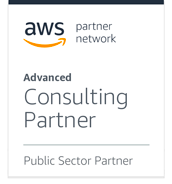PCI DSS 4.0
PCI DSS (Payment Card Industry Data Security Standard) is a set of security standards designed to ensure that all companies that accept, process, store, or transmit credit card information maintain a secure environment. It was established to protect cardholder data and reduce fraud. Compliance with PCI DSS is mandatory for any organization that handles credit card transactions.
Audit my Infrastructure
PCI DSS 4.0
The Payment Card Industry Data Security Standard (PCI DSS) is a comprehensive framework designed to ensure the secure handling of credit card information. It establishes a set of requirements that organizations must follow to protect cardholder data and prevent fraud. The framework includes guidelines for maintaining a secure network, implementing strong access controls, regularly monitoring and testing systems, and maintaining an information security policy. Compliance with PCI DSS is crucial for businesses that handle credit card transactions to safeguard sensitive data, maintain customer trust, and avoid costly breaches and regulatory penalties. By adhering to the PCI DSS framework, organizations can strengthen their security posture and mitigate the risks associated with processing payment card data.
2. Securing Systems & Networks
Build and Maintain a Secure Network and Systems:
Firewall Configuration
Implementing and maintaining a firewall configuration to protect cardholder data by restricting access to network resources.
Default Passwords
Ensuring default passwords and security parameters are changed to prevent unauthorized access to systems and devices.
Secure Network Protocols
Employing secure network protocols to safeguard cardholder data during transmission over public networks.
Secure System Components
Installing and updating security software, including antivirus programs and intrusion detection/prevention systems, to protect against malicious activities.
Access Control Measures
Restricting access to cardholder data based on business need-to-know and implementing strong access controls, such as unique IDs and passwords.
Secure Software Development
Developing and maintaining secure applications and systems to mitigate vulnerabilities and prevent exploitation by malicious actors.
Security Patch Management
Regularly applying security patches and updates to address known vulnerabilities and protect against emerging threats.
Secure System Configuration
Configuring systems and devices securely to minimize the risk of unauthorized access and ensure the integrity of cardholder data.
File Integrity Monitoring
Implementing file integrity monitoring mechanisms to detect unauthorized changes to critical system files and configurations.
Maintain a Vulnerability Management Program
The section of the PCI DSS framework focuses on implementing processes and procedures to identify, assess, and address vulnerabilities that could potentially compromise the security of cardholder data. Key controls in this section include
Request expert help todayRegular Software Updates
Apply patches and updates to all systems and software to address known vulnerabilities and protect against emerging threats.
Secure Coding Practices
Adhere to secure coding practices to minimize the risk of software vulnerabilities, such as input validation and output encoding.
Vulnerability Scans and Penetration Testing
Conduct regular vulnerability scans and penetration tests to identify and address security weaknesses in systems and applications.
Implement Strong Access Control Measures
The section of the PCI DSS framework emphasizes the importance of restricting access to cardholder data and ensuring that only authorized individuals can access sensitive information
Get help with Strong Access ControlUnique User IDs and Role-based Access Control (RBAC)
Assigning unique user IDs and implementing RBAC to limit access to cardholder data based on users' roles and responsibilities, ensuring that individuals have access only to the resources necessary for their job functions.
Strong Authentication and Restricting Physical Access
Enforcing strong authentication mechanisms and implementing physical access controls to verify user identities and prevent unauthorized access to facilities where cardholder data is stored or processed.
Need-to-know Principle and Regular Access Reviews
Adhering to the need-to-know principle and conducting regular reviews of user access rights to ensure that access permissions are aligned with individuals' current job roles and responsibilities, reducing the risk of unauthorized access.
Audit Logging, Monitoring, and Terminate Access
Implementing robust audit logging and monitoring mechanisms to track user activity, detect suspicious behavior, and promptly revoke access for individuals who no longer require access to cardholder data, enhancing data security and compliance.
Monitor and Test Networks
Logging and Monitoring
Implement logging and monitoring mechanisms to track and monitor all access to network resources and cardholder data, detecting and responding to security incidents in a timely manner.
Regular Security Testing
Conduct regular security testing, including network and application vulnerability scans, penetration tests, and security assessments, to identify and address security vulnerabilities and weaknesses.
Information Security Policy
Develop and maintain an information security policy that outlines security objectives, roles and responsibilities, security awareness training requirements, and incident response procedures.
Automation
Leverage automation and runbooks to respond to dynamic events at lighting speed.
Maintain an Information Security Policy
Comprehensive Security Policy
Develop and maintain a comprehensive information security policy that addresses all aspects of PCI DSS compliance, including security objectives, roles and responsibilities, security controls, and incident response procedures.
Security Awareness Training
Provide regular security awareness training to employees to educate them about security best practices, policies, and procedures.
Incident Response Plan
Develop and maintain an incident response plan to effectively respond to and mitigate security incidents involving cardholder data breaches or unauthorized access.
Our partners
Google Cloud, Amazon AWS, Microsoft Azure, and Kubernetes trust us to implement their technologies in for our clients.



